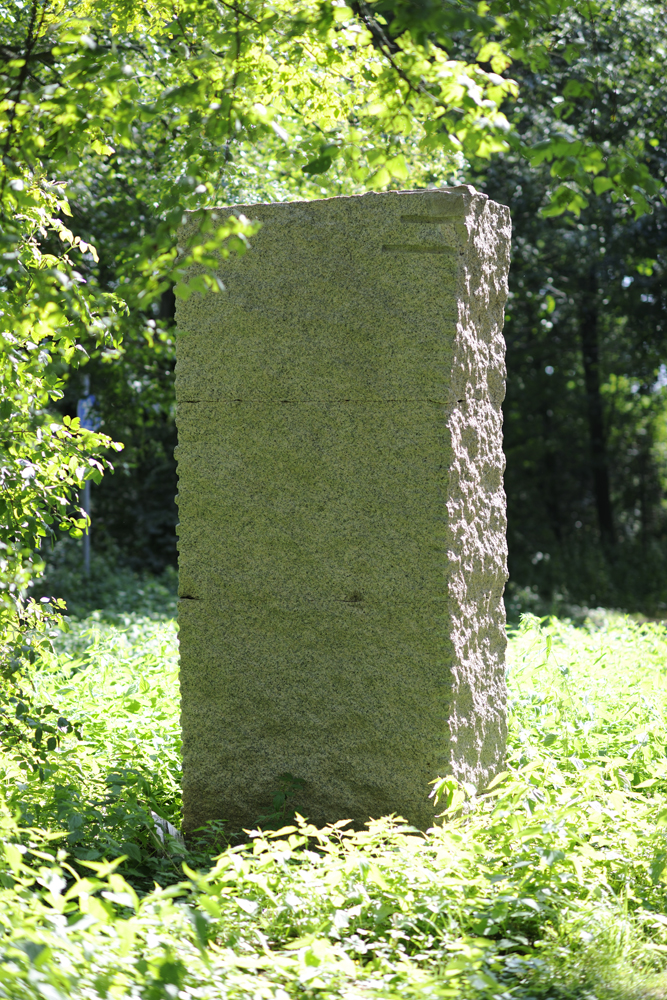Untitled






A narrow eleven-kilometer riding and hiking trail extends across fields and farmland, passing small towns within the Rhine district of Neuss. It starts south of the Erft river near Insel Hombroich and ends in Rommerskirchen. Flanked by large trees and numerous shrubs, the path has been widened in five locations for bus stops that were never installed.
In 1999, the decision to create a sculpture path along this former railway embankment was inspired in part by its proximity to the sculpture halls at the Kulturzentrum Sinsteden — where Ulrich Rückriem’s work has been on permanent display since 1994. At the time, the landscape was still largely comprised of undeveloped nature, offering brief views of highly varied terrain. With that in mind, the artist selected seven slabs of pink granite that had been extracted from the quarry in 1997 and placed them at large intervals along the path.
Each element has a similar formal design: a rectangular stele divided into four distinct parts by horizontal rows of boreholes. The bottom quarter of the stone is embedded in the ground, serving as the foundation and low pedestal for the three rectangular cubes stacked on top of it. It is clear to viewers that all of these monolithic stelae are made of the same stone.
Nonetheless, the seven stelae are not conceived as a group and can’t be viewed together. The distance between them is so great that they must be discovered along the route from Rommerskirchen to Helpenstein, a small town in Neuss where Rückriem spent his childhood.
In this way, each of the sculptures stands on its own, finding a balance with the surrounding nature while not overburdening it. As highlighted in comparison to the other similar granite stelae, each sculpture’s specific set of characteristics creates a distinct accent on the landscape.
Further reading: Ulrich Rückriem, Bahndamm, Verlag Walther König, ISBN 3-88375-699-7
Ulrich Rückriem
← Zur Startseite
Railroad embankment between Rommerskirchen and Neuss



